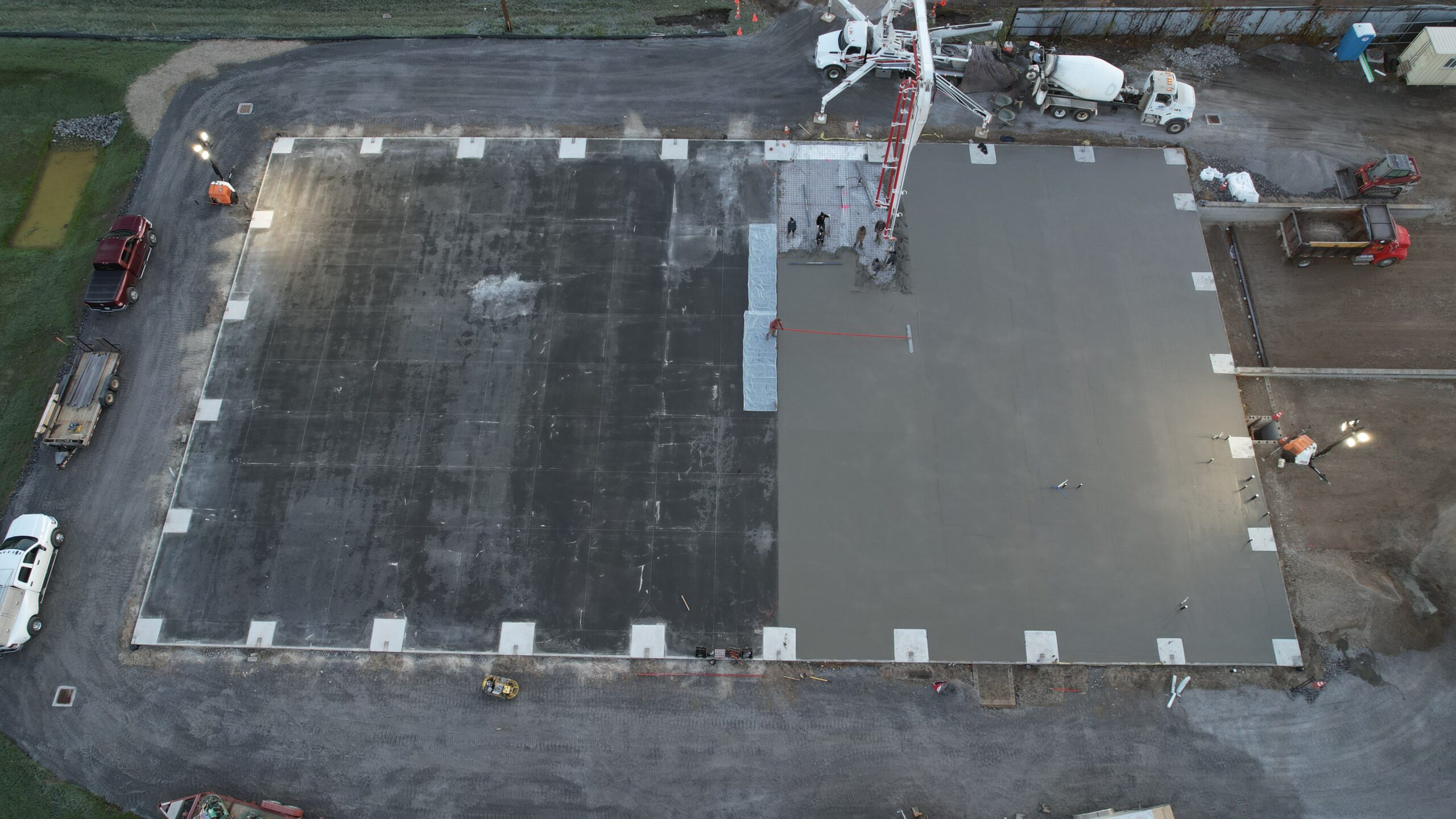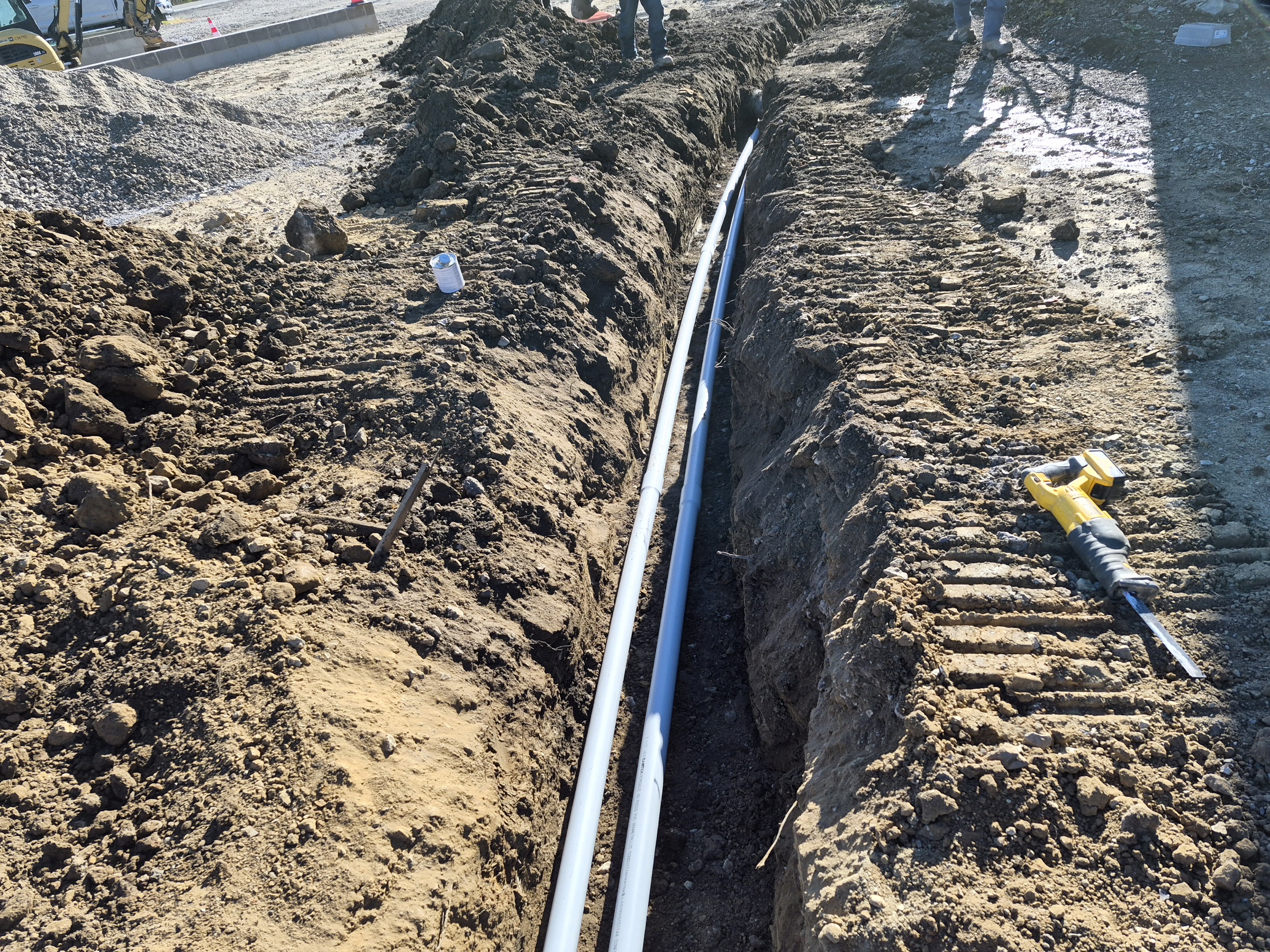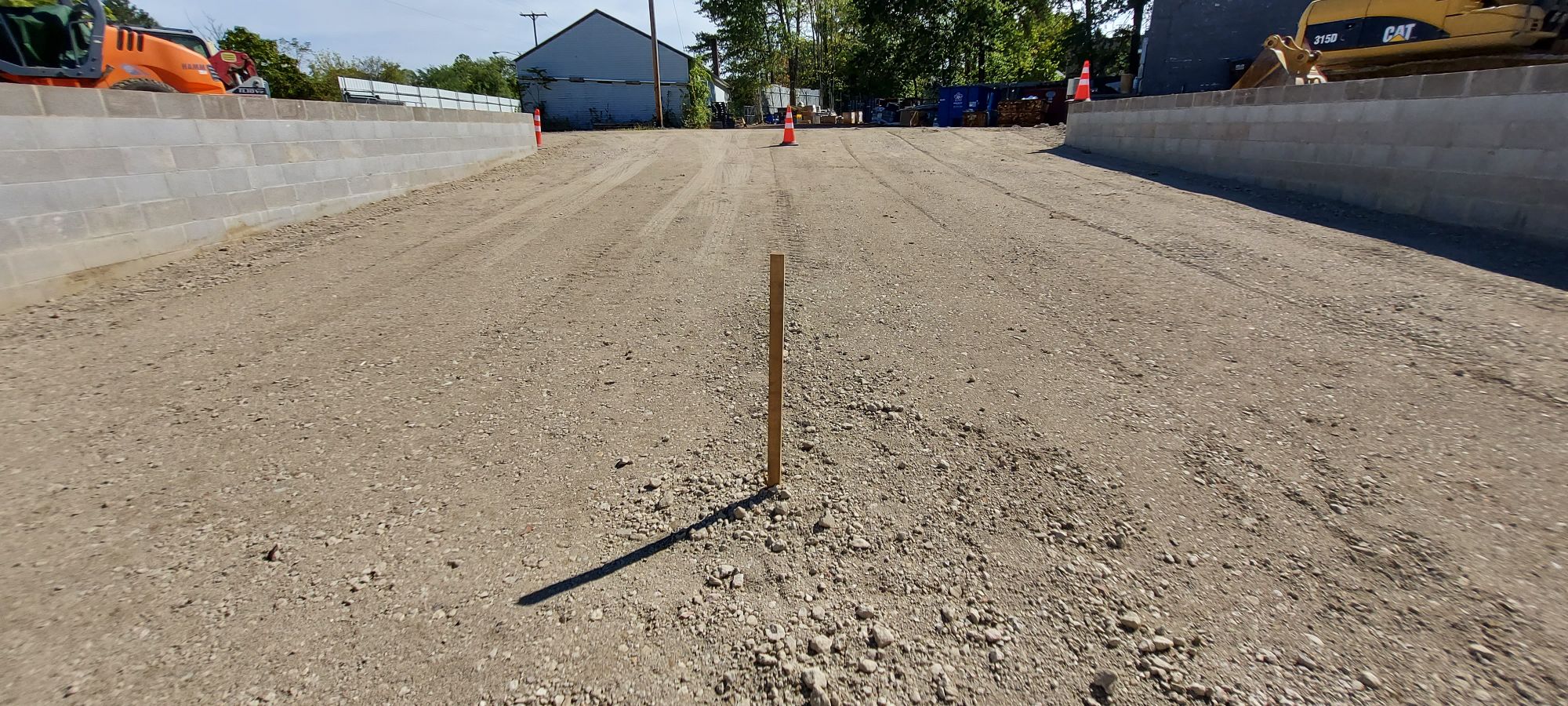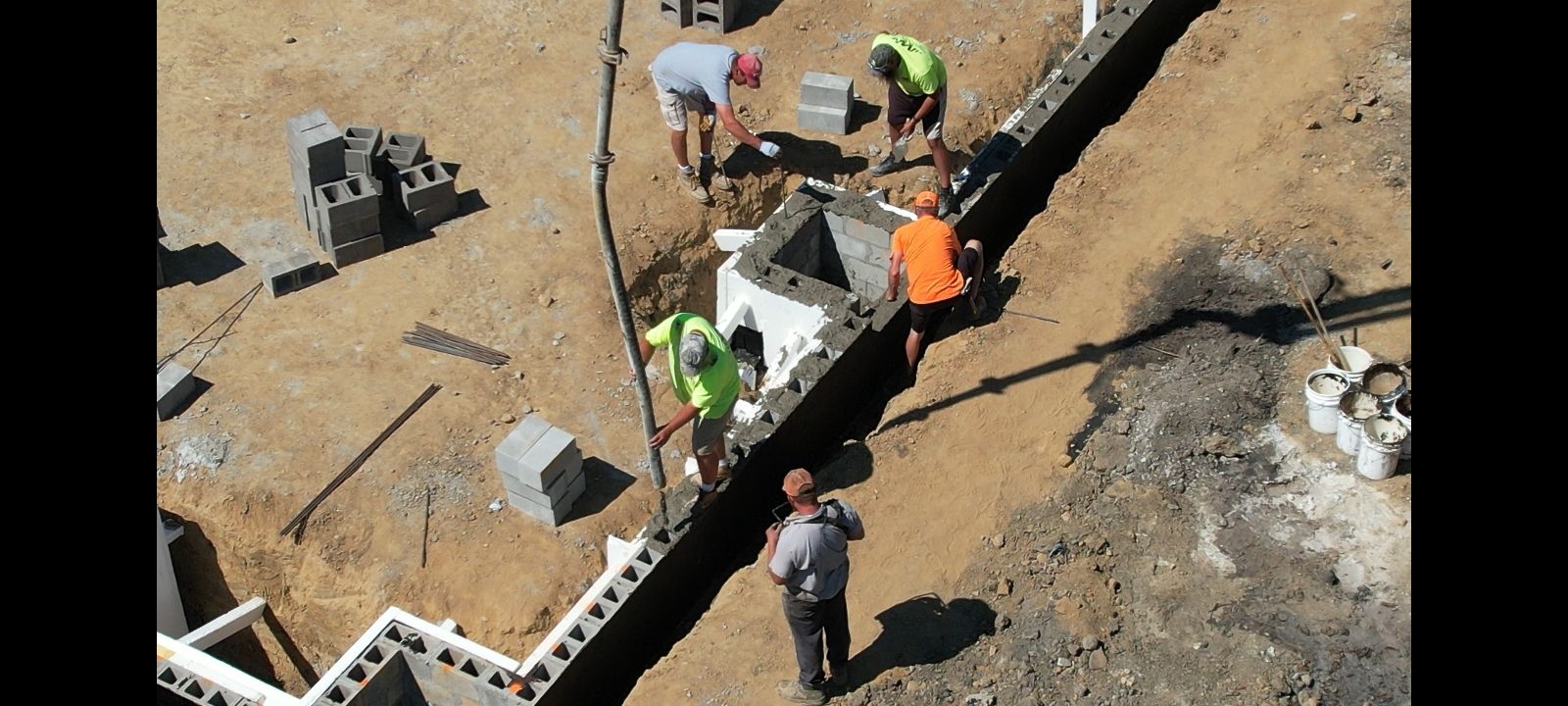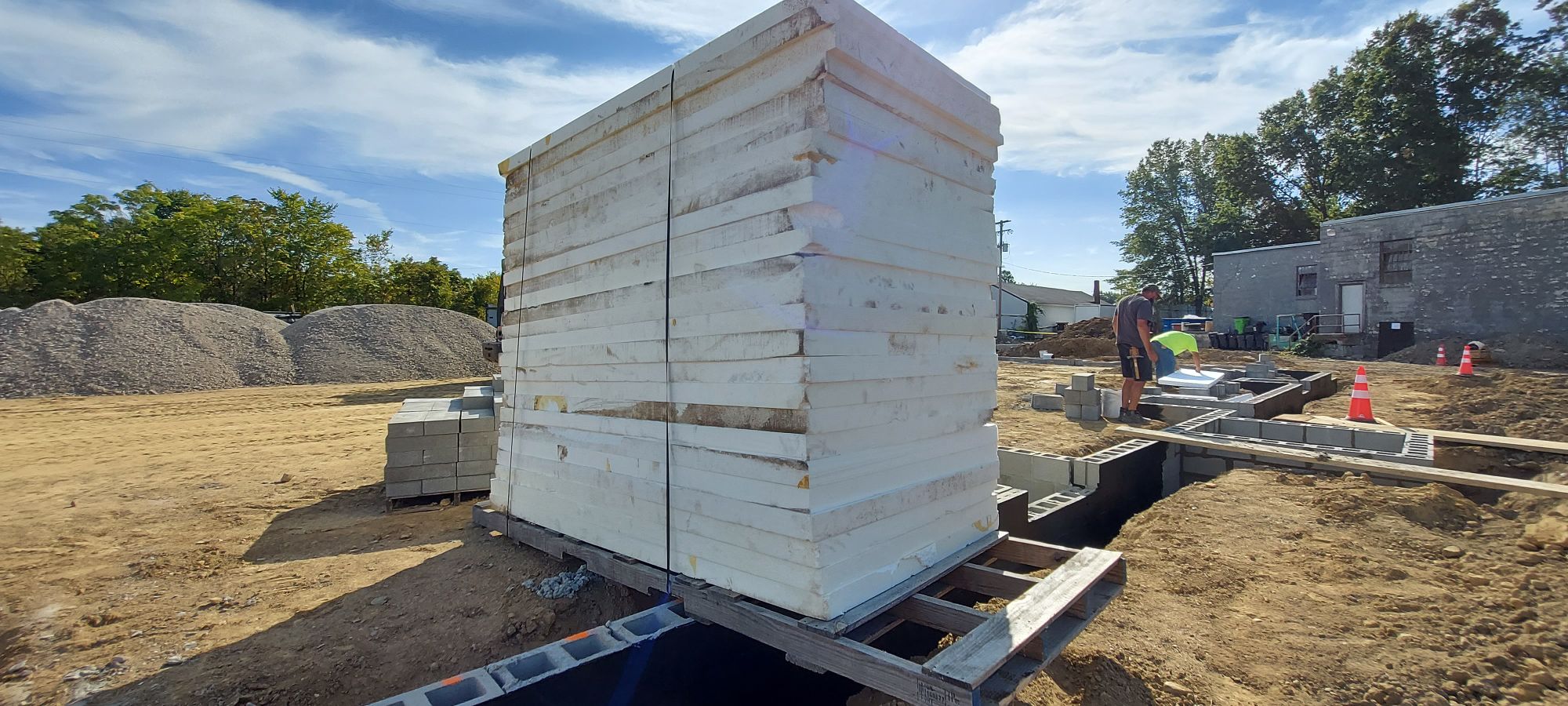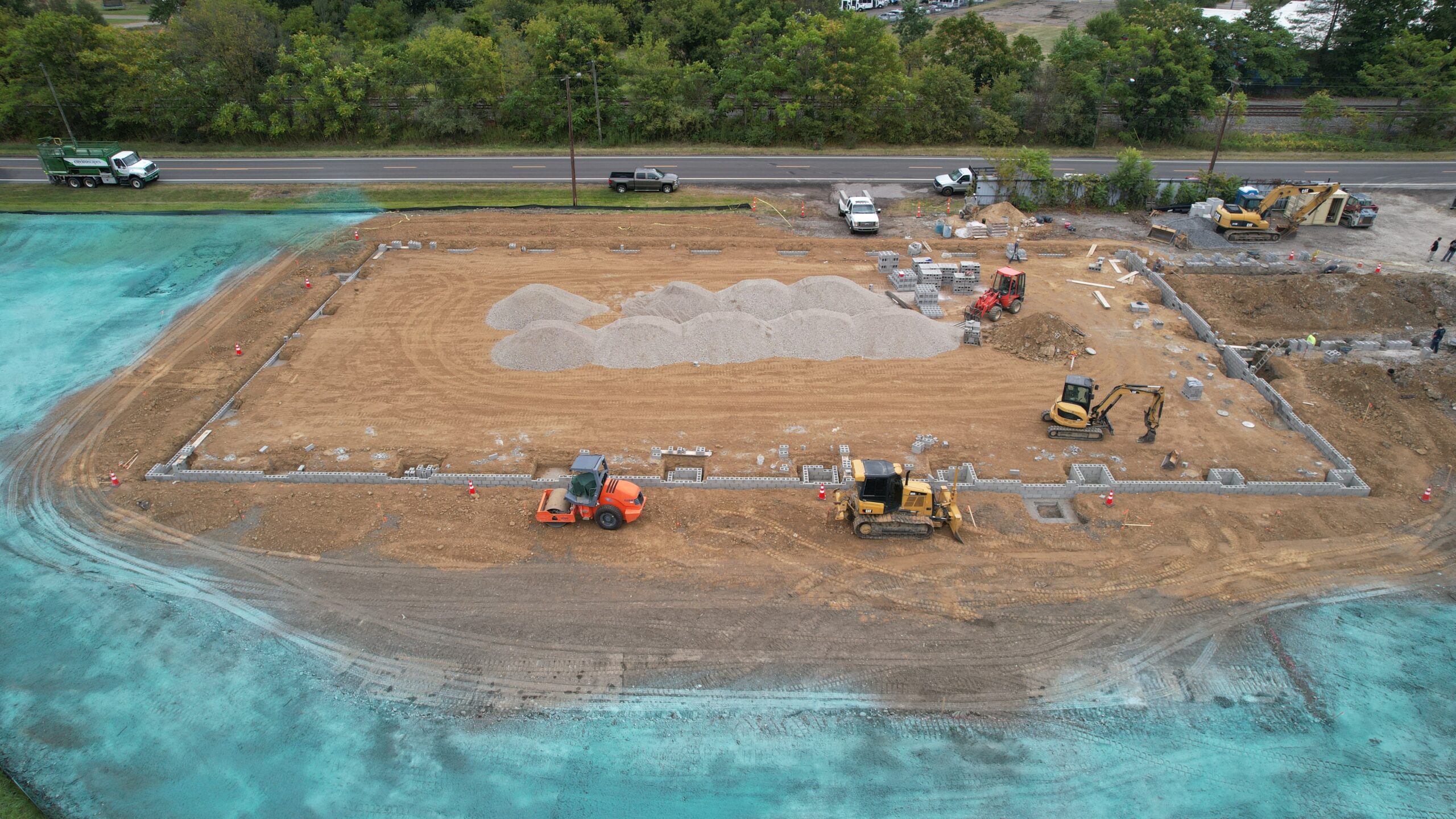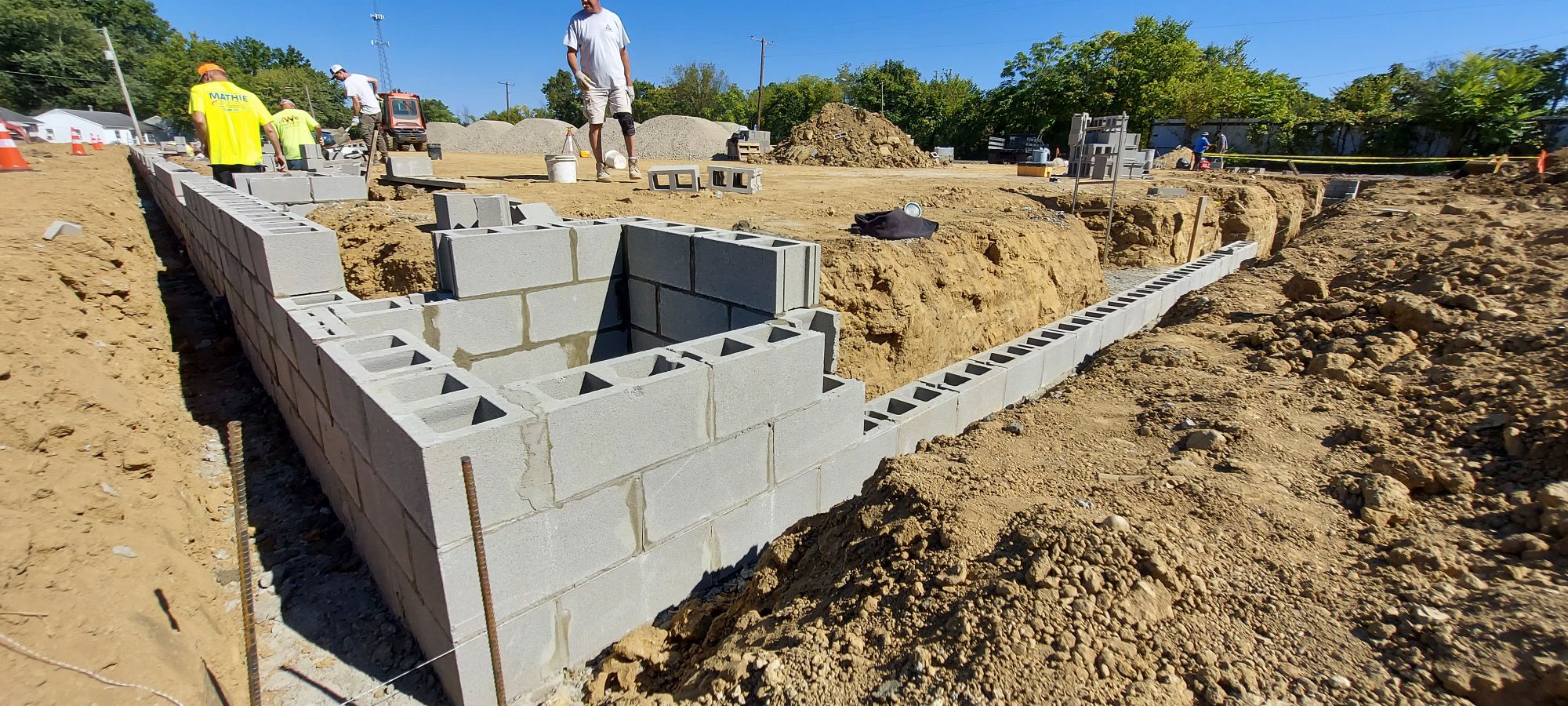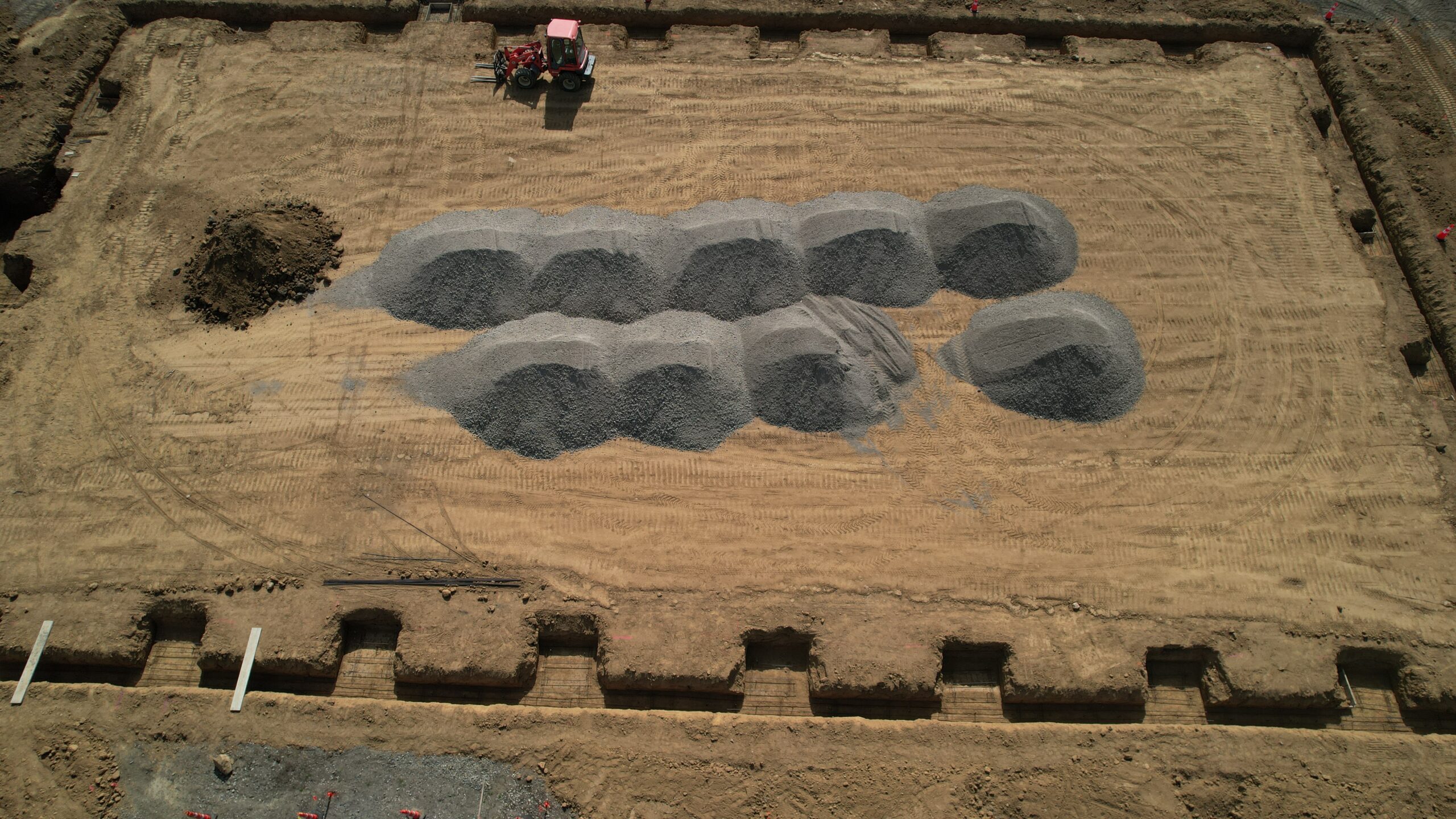The foundation of Boardsort’s new 18,000-square-foot facility just took its biggest step yet—literally. After months of preparation, reinforcement, and underground work, the crew began the massive concrete pour that forms the backbone of our building: the main floor slab and pylon system. The process unfolded in three major stages, starting with the thirty pylon bases. Phase 1 — Thirty Anchor Pylons We began by setting thirty concrete pylons that will carry the building’s steel frame. Each pylon used a removable template to suspend four threaded anchor studs at precise elevations and bolt spacings; the pour buries most of each stud, […]
Power to the People
The next major step in bringing the new Boardsort facility online is electrifying the operation — literally. In the photos above, trenches are being dug and underground electrical conduit is being laid, marking the path for the incoming 480-volt service that will power the building. By running the conduit below ground, the installation stays clean and unobstructed, ensuring that trucks, loaders, and tall equipment can move freely without the risk of overhead lines being clipped or damaged. Once buried, these conduits will protect the high-voltage cables from weather, impact, and corrosion for decades to come. The system is designed to […]
What’s up dock?
The new dual recessed loading dock is taking shape, and it’s designed with the scale of modern freight in mind. Capable of handling two full-size 18-wheeled Freightliners at once, the dock can easily accommodate trucks stretching over 80 feet long from cab to trailer. To support that capacity, the ramp has been cut and compacted to a footprint of 60 feet in length and 40 feet in width, giving ample room for maneuvering and staging. At the heart of the dock is its reinforced deck. The surface will consist of six inches of poured, steel-reinforced concrete laid over a heavily […]
Under Pressure: Put the plumbing to the test.
With the block walls set and backfill in place, attention turned to the underground plumbing network — a system that must be installed and tested before the slab can be poured. The plumbers carefully cut trenches across the compacted gravel base, laying in PVC drain and vent piping that will serve multiple bathrooms, the break room kitchenette, and the utility room with its slop sink and floor drain. Every pipe location is laid out with precision from the building plans, since once the concrete slab is poured, these runs are locked in permanently. The black PVC pipe being used here […]
Seal the Deal with Foam
Stacks of rigid Styrofoam insulation panels were delivered to the site and cut to fit neatly inside the footer walls. This foam serves a dual purpose: it reduces heat loss through the foundation, improving the building’s energy efficiency, and it also helps protect against frost penetration. By insulating below grade, the walls are shielded from the cycles of freezing and thawing that can shift soils and put extra stress on the structure. After the Styrofoam was set, the crew began applying a thick, tar-like sealant to the outer surface of the concrete masonry units. This material is an asphalt-based waterproofing […]
The Lawn Cannon: Seeding at Full Blast
Out at the site this week, another piece of the project puzzle came into play: hydroseeding the freshly graded slopes. In these photos you can see the crew operating a specialized hydroseeder truck, blasting a vivid green slurry across the bare soil. That mix isn’t just grass seed — it’s a slurry of seed, mulch fiber, fertilizer, water, and tackifier (a kind of natural glue) that clings to the soil surface, protecting against erosion while giving the grass a nutrient-rich start. The mulch fibers hold moisture like a sponge, keeping the seeds damp long enough to sprout even under sunny […]
Block Party: The Foundation Walls Go Up
The blockwork is officially underway, and these photos capture a critical stage of the foundation coming to life. What you see here are masons carefully setting concrete masonry units (CMUs) along the perimeter trench, creating the footing walls that will ultimately support the entire structure above. The precision is evident: a taut mason’s line keeps each course of block perfectly level and aligned, while rebar reinforcement is being laid into the hollow cores, ensuring strength against lateral loads and settling. These steel rods will later be tied into vertical dowels and encased in grout, locking everything together into a rigid, […]
Pump It Up: Footers in Place
Today marks one of the most exciting milestones yet — the concrete for our footers has arrived and been poured. After weeks of digging trenches, setting rebar, and preparing the base with gravel, it’s finally time to put solid strength into the ground. From overhead, you can see the pump carefully laying concrete into each trench, filling in the network of rebar and cutouts that will soon cure into the foundation of the building. Known as a truck-mounted boom concrete pump, it uses a long, hydraulically controlled arm to deliver concrete with pinpoint accuracy across the entire footprint of the […]
Rebar in the Hole.
The next stage of construction has officially begun, and with it comes a new look for the site. Rebar and gravel have arrived, marking the final steps before concrete is poured into the footers. From above, the pattern of the excavation cutouts is striking — a repeating series of trenches and squares that hint at the structure to come. Take a closer look and you will see that the rebar is already in place, especially around the corners where the building will need the greatest strength. These steel reinforcements will give the concrete footers the rigidity needed to hold up […]


